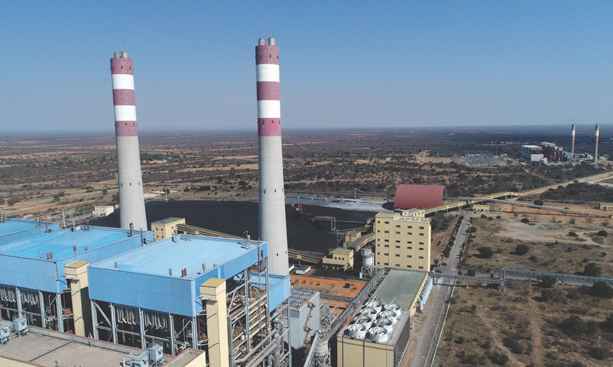Botswana electricity generation and distribution has gone up by 13.8% while the electricity importation decreased by 31.8 % in the first quarter, according to Statistics Botswana report.
The increases, according to the study, were largely attributed to an improved performance of the Morupule B Power Station with a view to meet the country’s climbing electricity demand rate.
Statistics Botswana in its 2018 electricity generation report attributed power decrease to minimal operations following remedial activities undertaken at the Morupule B power station during the first two weeks of October 2018.
Morupule B Power Station is currently undergoing reconstruction to correct the mistakes so as to ensure that the defunct power supply station operates to its full capacity or increased efficiency level.
The multibillion power supply centre for quite some time has been battling with power plant breakdowns, as only operated two units to supply power as the other two have been damaged.
The recently released electricity generation and distribution quarterly statistics indicates that the Index of Electricity Generation (IEG) stood at 184.4 during the first quarter of year 2019.
This reflects a year-on –year increase of 13.8% compared to 162.3 recorded during the corresponding quarter in 2018.
In addition, the quarter –on-quarter comparison shows an increase of 71.5 % from 107.7 during the fourth quarter of 2018 to 184.4 during the current quarter.
“The physical volume of electricity generated increased by 13.8 percent, from 682,380 MHW during the first quarter of 2018 to 776,653 MHW during the current quarter. The quarter-on-quarter perspective shows that local generation increased by 71.5 percent, from 452,938 MHW during the fourth quarter of 2018 to 776, MHW during the period under review,” reveals study.
During the quarter the physical volume of imported electricity decreased by 31.8 % (88,205 MHW), from 277,270 MHW during the first quarter of 2018 to 189,065 MHW during the current quarter.
The quarter-on quarter comparison shows a decrease of 63.0 percent (321,233 MHW), from 510,298 MHW during the fourth quarter of 2018 to 189,065 MHW during period under review.
Electricity import decrease is attributed to improved local generation, particularly at Morupule B Power Plant, to meet domestic demand, as well as on-going efforts to reduce imports reliance.
Figures also show that in view of the foregoing, the Southern African Power Pool (SAPP) was the main source of electricity at 48.2 percent of total imports while the remaining 35.9, 12 and 3.9 percent were imported from Eskom, cross boarder markets and Nam Power respectively.
Comparison of electricity distributed during the reference period and the first quarter of 2018 shows an increase of 0.6 percent (6,086 MHW), from 959,650 MHW during the first quarter of 2018 to 965,718 MHW during the current quarter.
Moreover, the statistics indicate that electricity generated locally contributed 80.4 percent to electricity distributed during the first quarter of 2019.
This is compared to a contribution of 71.1 percent during the same quarter in 2018, giving an overall increase of 9.3 percentage points.
